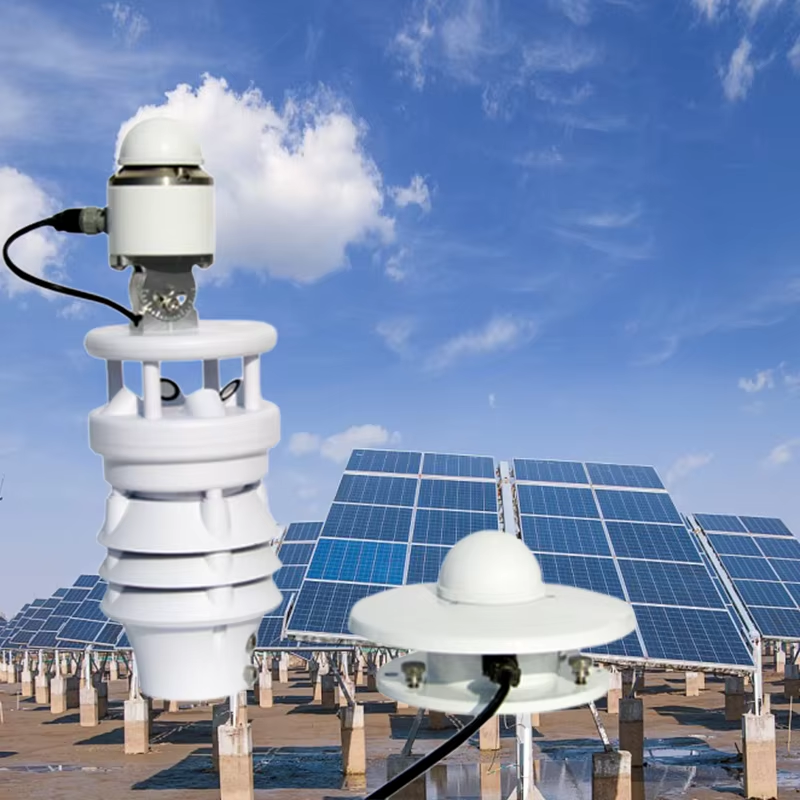New Delhi – Against the backdrop of increasingly severe global climate change and frequent extreme weather, New Delhi’s first electro-optical weather station was officially put into use recently. This advanced meteorological monitoring facility will significantly enhance New Delhi’s meteorological monitoring and forecasting capabilities, providing more accurate meteorological information for the government, farmers and the public, and contributing to disaster prevention and mitigation as well as agricultural development.
The technological advantages of the photoelectric weather station
The newly-built photoelectric weather station adopts the latest photoelectric technology and integrates multiple environmental monitoring sensors, including multiple data acquisition systems for temperature, humidity, wind speed, precipitation and atmospheric pressure. In addition, the photoelectric weather station is equipped with high-resolution and high-definition cameras, which can observe weather changes and meteorological phenomena in real time, providing important basis for scientific research and disaster early warning.
The core technology of this station is based on the high-precision data acquisition and processing capabilities of photoelectric sensors, which enables it to far surpass traditional meteorological stations in data acquisition and real-time monitoring. Compared with traditional weather stations, the data update frequency of photoelectric weather stations has increased by more than 50%, and the accuracy and precision of real-time monitoring have also been significantly improved.
It has broad application prospects.
The photoelectric weather station can not only be used for weather forecasting and meteorological research, but also shows great application potential in fields such as agriculture, transportation and environmental protection. Indian farmers will be able to rely on more accurate meteorological data for sowing, fertilizing and harvesting, optimizing agricultural production efficiency. Meanwhile, the transportation department can also make use of more accurate meteorological information to enhance its response and management to severe weather and ensure traffic safety.
The launch of the photoelectric weather station marks an important step forward for us in meteorological monitoring technology. With the advancement of technology and the expansion of applications, we look forward to better serving all sectors of society. The director of the New Delhi Meteorological Bureau said.
Actual case
In 2019, India experienced severe monsoon floods, which severely affected several states and posed a great threat to people’s lives. During this flood, due to the low forecasting efficiency of traditional meteorological stations, many residents failed to obtain accurate meteorological information in time and missed the best opportunity for evacuation, thus causing huge economic losses and casualties.
The opening of the photovoltaic weather station in New Delhi this time is precisely to prevent similar incidents from happening again. For instance, before the upcoming monsoon season arrives, the photoelectric weather station will be able to monitor the precipitation in real time, predict the intensity and duration of rainfall, and promptly issue warnings to residents. The government can promptly mobilize resources and take necessary flood control measures based on these data.
In practical applications, the technology of photoelectric weather stations will enable the issuance of severe weather warnings 2 to 3 hours in advance before a certain summer thunderstorm, and scientifically analyze the probability of lightning activity. This precise forecasting ability can help all sectors respond promptly and effectively reduce potential losses.
Future Outlook
The commissioning of the photoelectric weather station is an important milestone in the modernization process of meteorology in New Delhi. In the future, it is planned to promote this advanced facility in more Indian cities to comprehensively enhance the regional meteorological service capacity. By continuously enhancing the application of technology in the meteorological field, New Delhi will more effectively address the challenges brought about by climate change and provide strong support for economic development and the security of people’s lives.
Summary
With the official commissioning of the photoelectric weather station, New Delhi has ushered in a new era in meteorological monitoring and forecasting. Meteorological services empowered by technology will better serve agriculture, transportation and people’s health in the future, and contribute to the construction of smart cities.
For more weather station information, please contact Honde Technology Co., LTD.
Tel: +86-15210548582
Email: info@hondetech.com
Company website: www.hondetechco.com
Post time: Jun-26-2025


